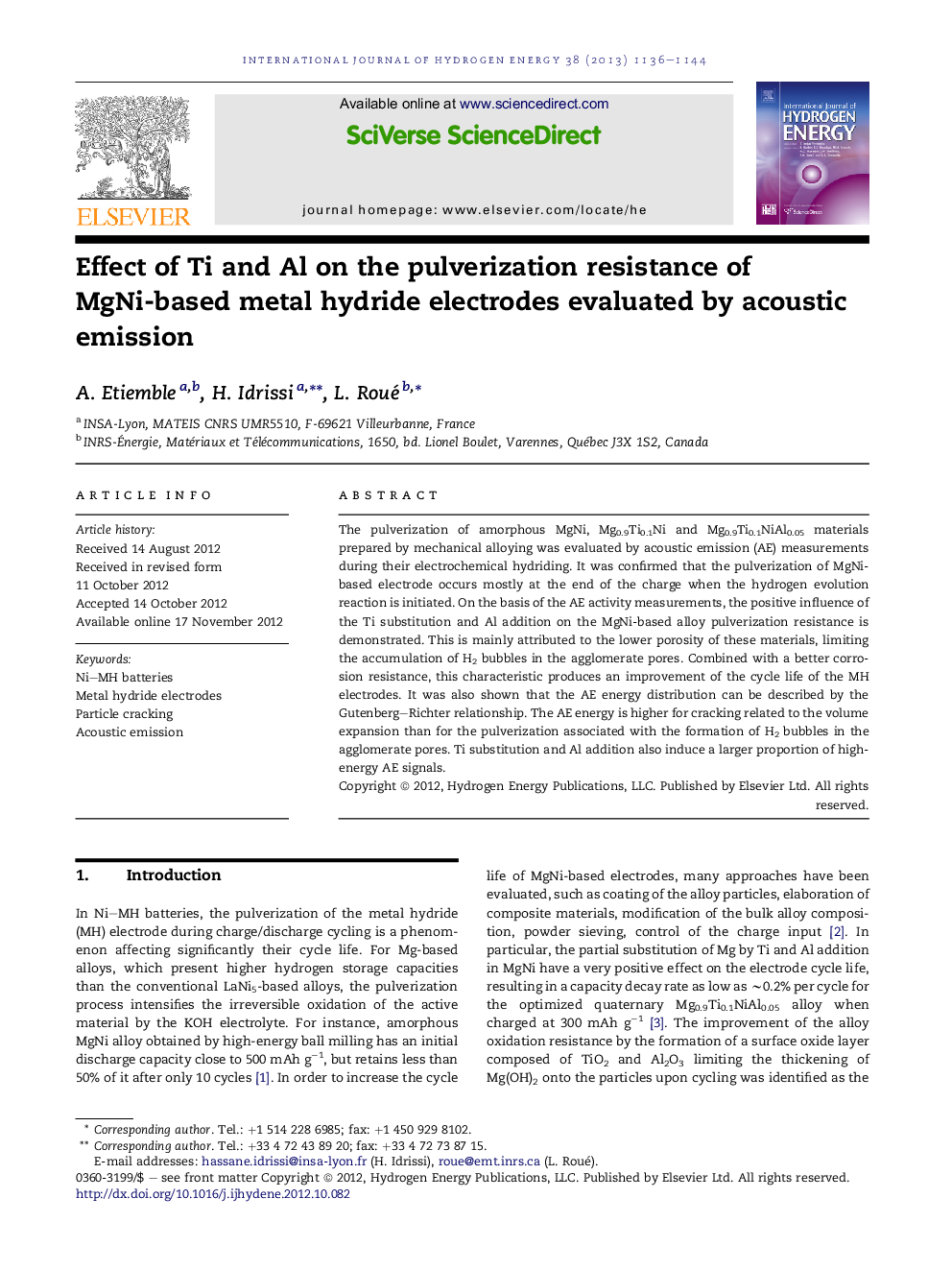| Article ID | Journal | Published Year | Pages | File Type |
|---|---|---|---|---|
| 1282080 | International Journal of Hydrogen Energy | 2013 | 9 Pages |
The pulverization of amorphous MgNi, Mg0.9Ti0.1Ni and Mg0.9Ti0.1NiAl0.05 materials prepared by mechanical alloying was evaluated by acoustic emission (AE) measurements during their electrochemical hydriding. It was confirmed that the pulverization of MgNi-based electrode occurs mostly at the end of the charge when the hydrogen evolution reaction is initiated. On the basis of the AE activity measurements, the positive influence of the Ti substitution and Al addition on the MgNi-based alloy pulverization resistance is demonstrated. This is mainly attributed to the lower porosity of these materials, limiting the accumulation of H2 bubbles in the agglomerate pores. Combined with a better corrosion resistance, this characteristic produces an improvement of the cycle life of the MH electrodes. It was also shown that the AE energy distribution can be described by the Gutenberg–Richter relationship. The AE energy is higher for cracking related to the volume expansion than for the pulverization associated with the formation of H2 bubbles in the agglomerate pores. Ti substitution and Al addition also induce a larger proportion of high-energy AE signals.
► The cracking of MgNi-based hydride materials was studied by acoustic emission. ► Their cracking is mainly induced by the hydrogen evolution reaction. ► Ti substitution and Al addition increase the alloy pulverization resistance. ► This is mainly attributed to the lower porosity of these materials.
